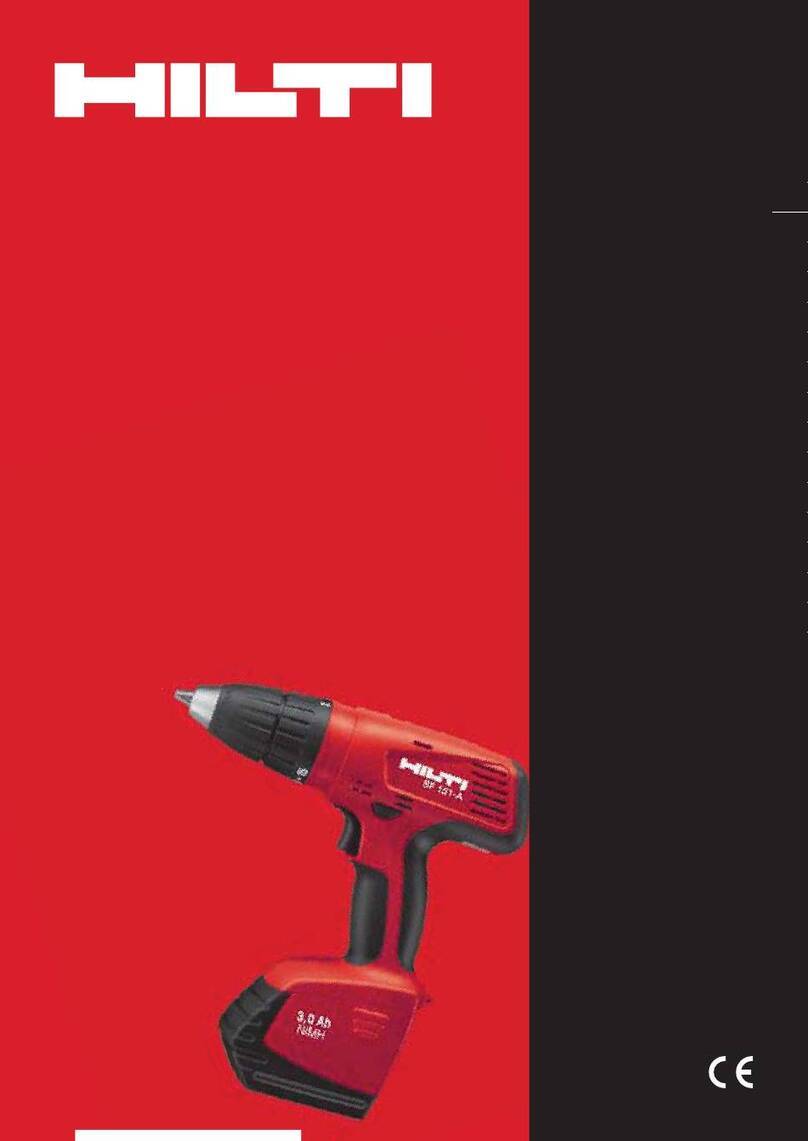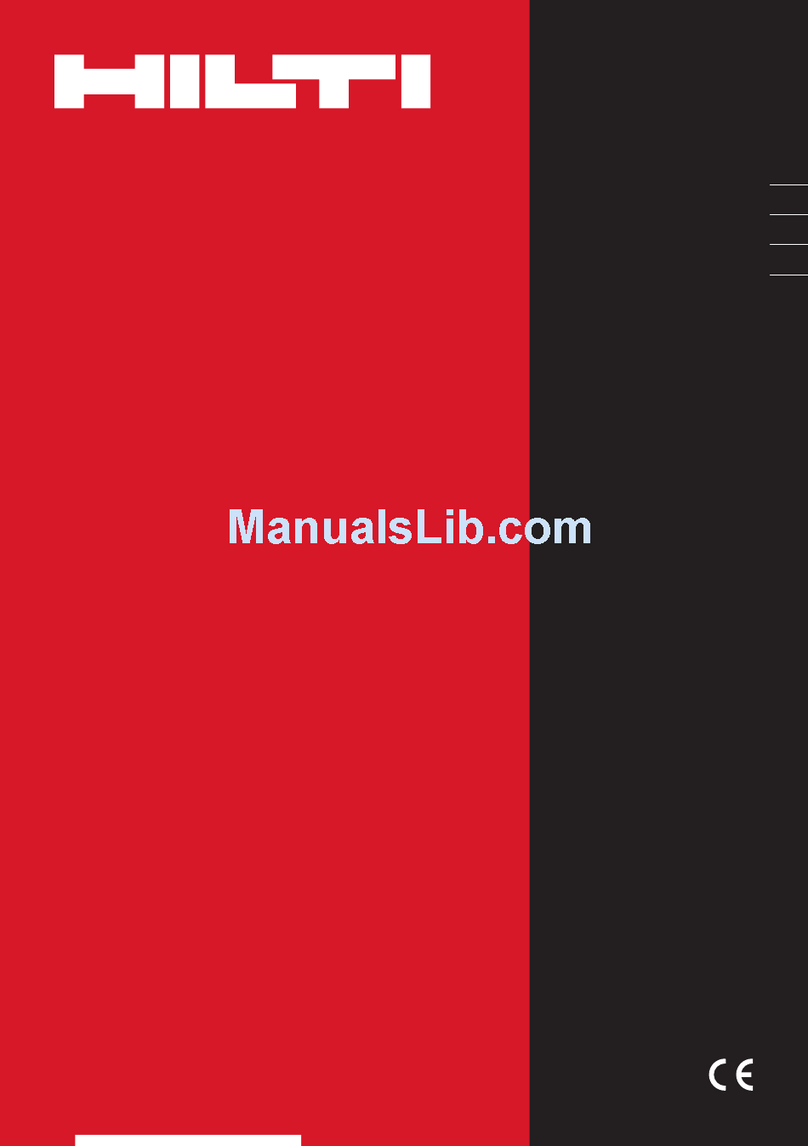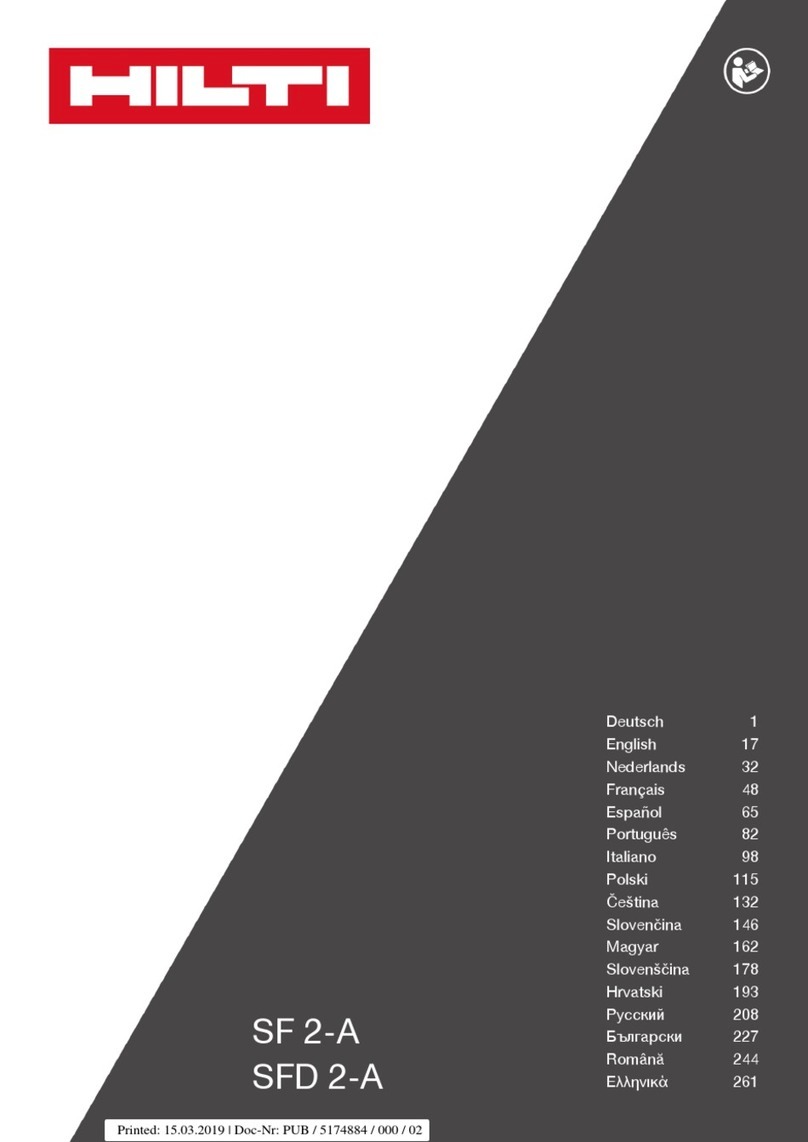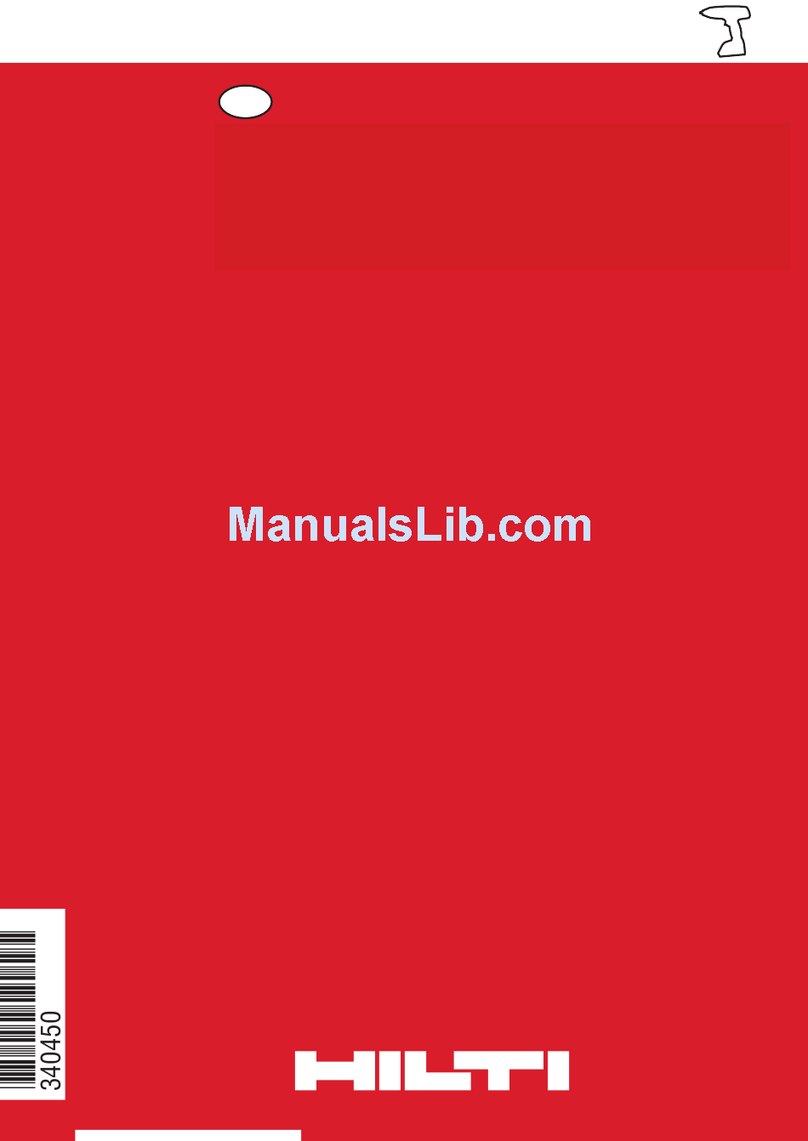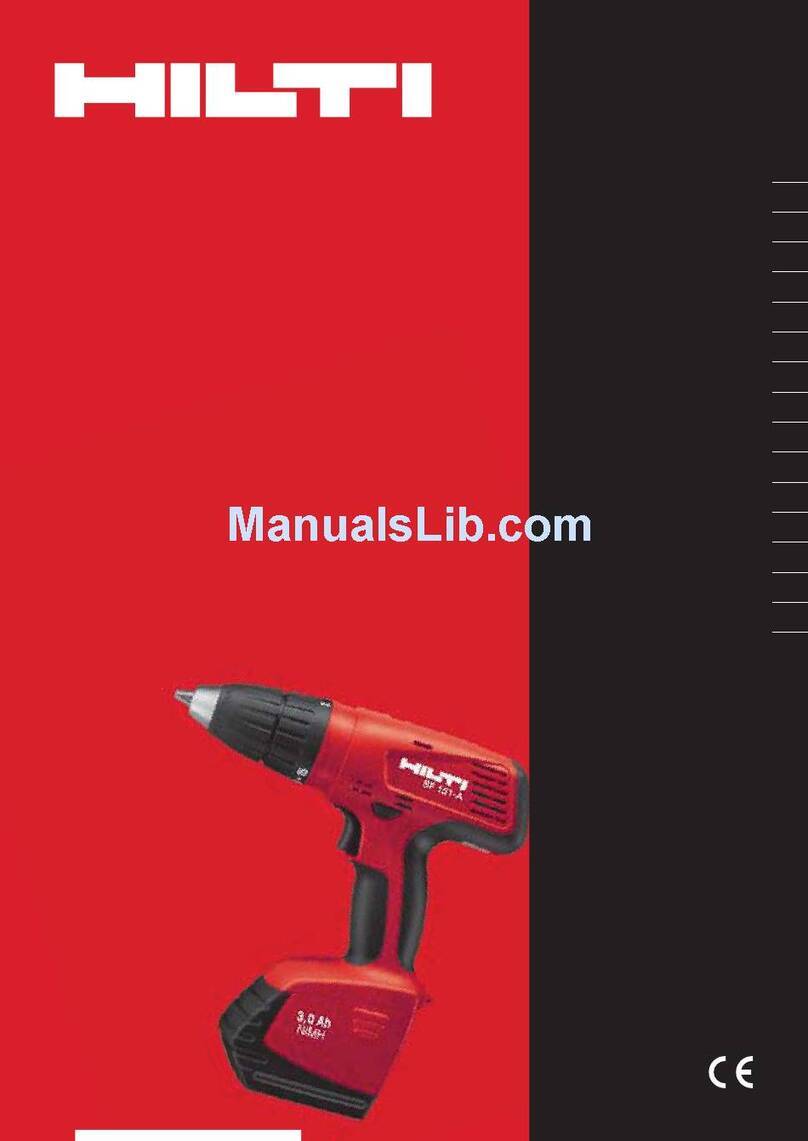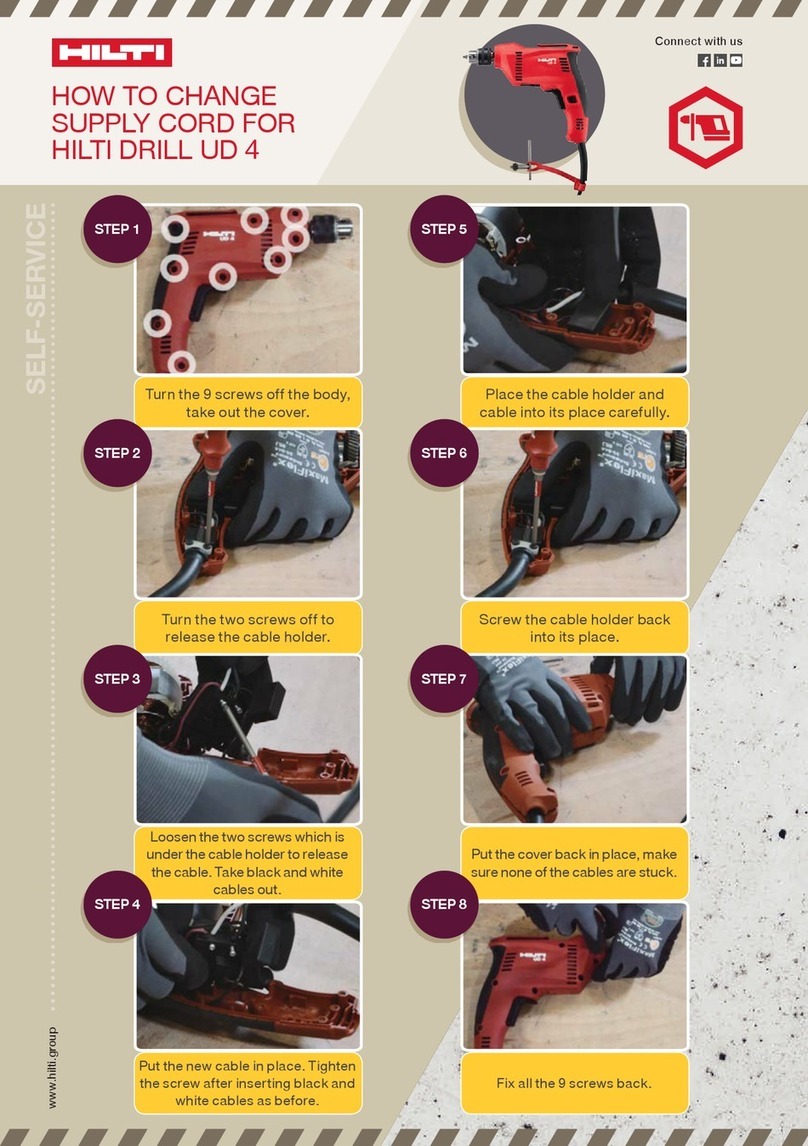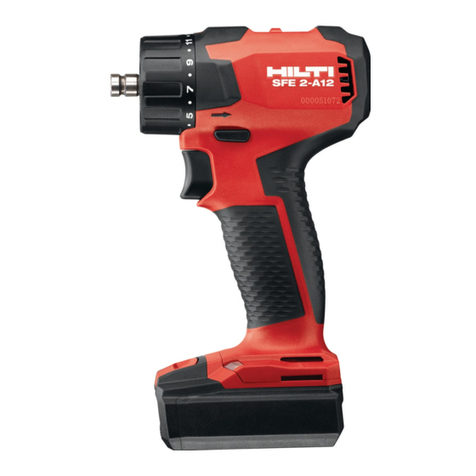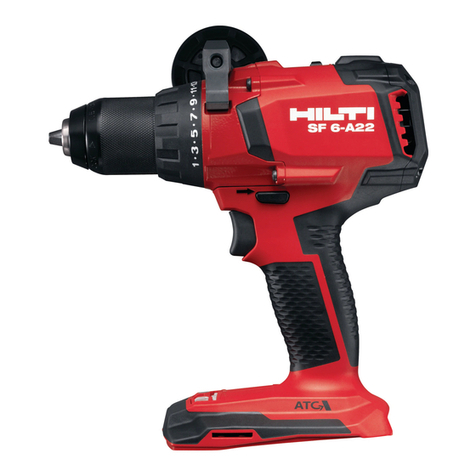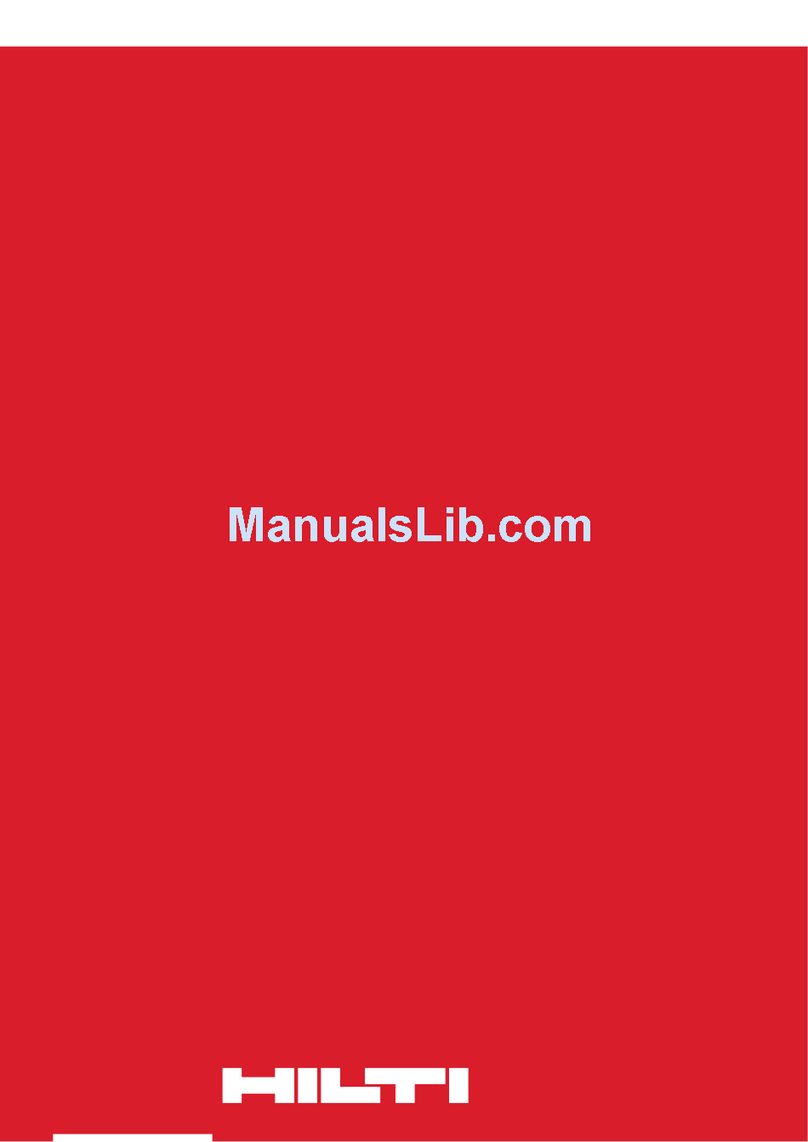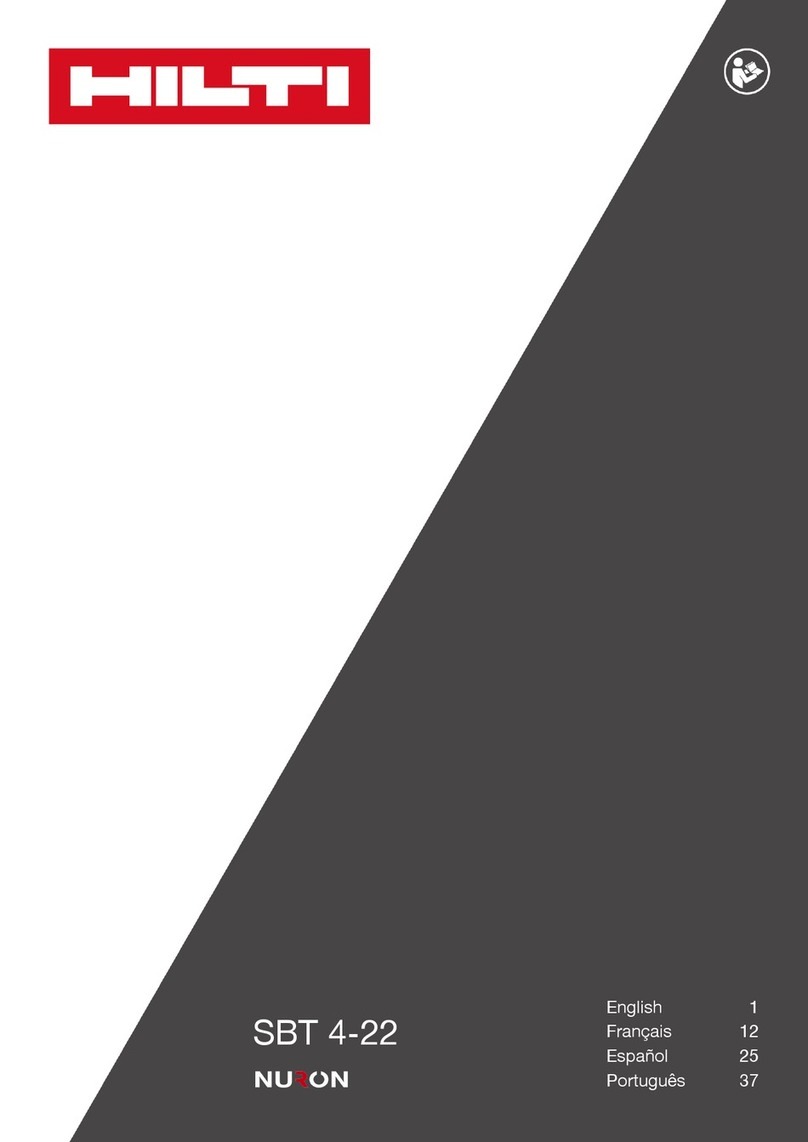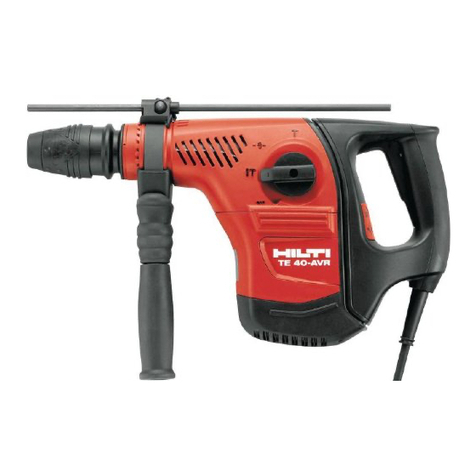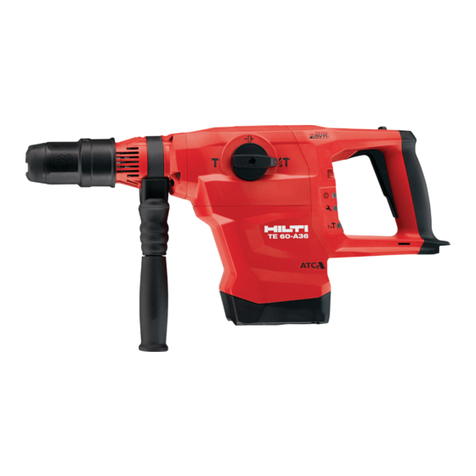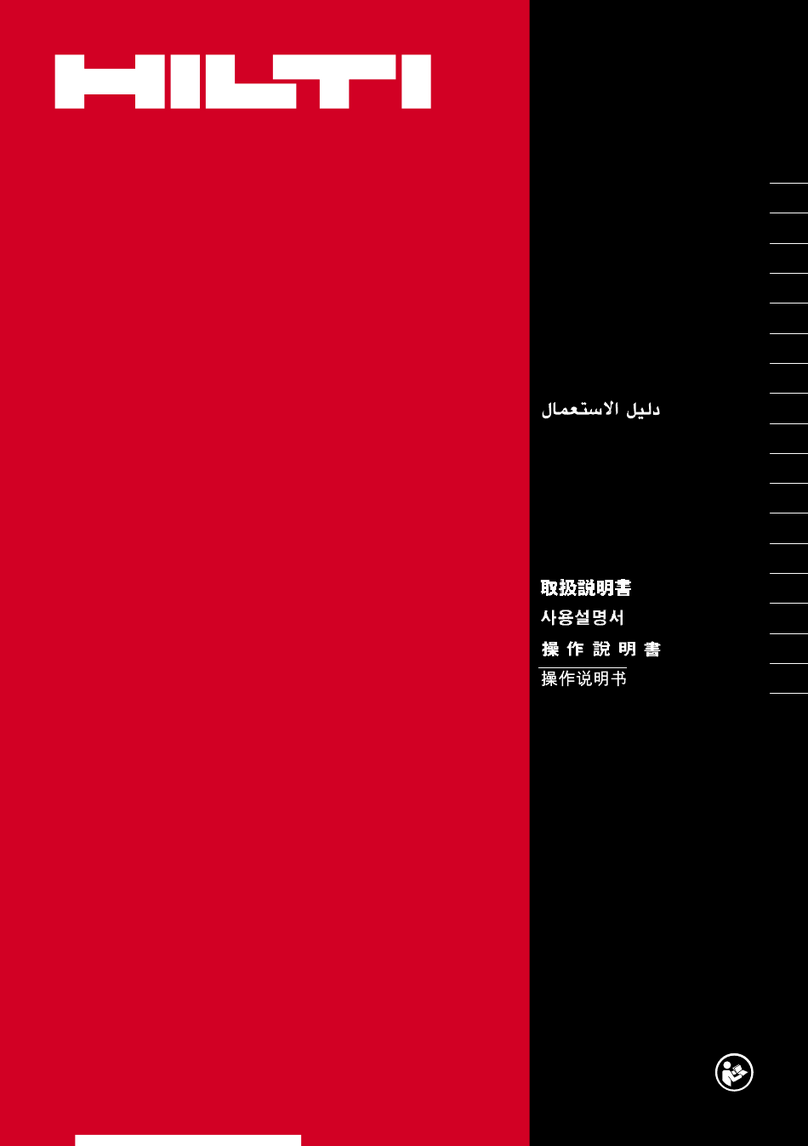en
4
Return waste
material for
recycling.
Location of identification data on the power tool
The type designation can be found on the type identification plate at the
base of the power tool and the serial number on the side of the casing.
Make a note of this data in your operating instructions and always refer to it
when making an enquiry to your Hilti representative or service department.
Type:
Generation: 01
Serial no.:
2 Description
2.1 Use of the product as directed
The SF 14-A is a hand-held, cordless drill/driver for driving and removing
screws and for drilling in steel, wood and plastic.
The SFH 14-A is a hand-held, cordless hammer drill/driver for driving and
removing screws, for drilling in steel, wood and plastic and for hammer
drilling in lightweight concrete and masonry.
Working on materials hazardous to the health (e.g. asbestos) is not
permissible.
Do not use the battery as a power source for other unspecified appliances.
Modification of the power tool or tampering with its parts is not permissible.
To avoid the risk of injury, use only genuine Hilti accessories and insert
tools.
Observe the information printed in the operating instructions concerning
operation, care and maintenance.
The power tool is designed for professional use and may be operated,
serviced and maintained only by trained, authorized personnel. This
personnel must be informed of any special hazards that may be encountered.
The power tool and its ancillary equipment may present hazards when used
incorrectly by untrained personnel or when used not as directed.
Printed: 30.09.2013 | Doc-Nr: PUB / 5071630 / 000 / 02
